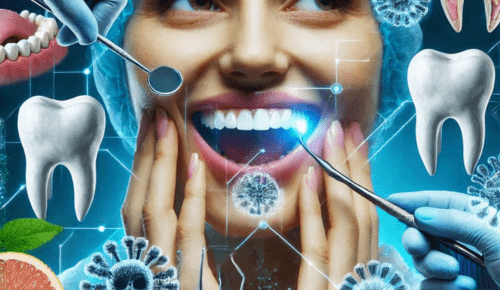A family dentist appointment can feel daunting, but knowing what to expect makes it smoother. When you visit an Oshawa dentist office, the experience is designed to be calm and reassuring. Dentists focus on three main areas: assessment, prevention, and treatment. During your visit, the dentist will first examine your teeth and gums. This helps identify any issues, such as cavities or gum inflammation. Next, the dental hygienist will clean your teeth, which helps prevent future problems. They will remove plaque and tartar, leaving your teeth feeling fresh. Lastly, the dentist will discuss any findings with you, explaining the best course of action if further treatment is necessary. This transparent approach ensures you understand your dental health and how to maintain it. Regular visits to the dentist keep your smile healthy and strong. They also help catch potential problems early, reducing the need for more extensive procedures later.
The Initial Assessment
The first step in a dental appointment is the initial assessment. This involves a thorough check of your teeth and gums. The dentist uses a small mirror to inspect each tooth and the surrounding gum. They look for cavities, gum disease, and other oral health issues. An X-ray may also be taken to get a clearer picture of your dental health. This helps in identifying any deeper issues not visible to the naked eye.
Dental Cleaning Process
After the assessment, the dental hygienist takes over to clean your teeth. This process is crucial for removing plaque and tartar that regular brushing cannot. The cleaning includes scaling, where special tools remove hardened deposits on teeth. Polishing follows to smooth your teeth’s surface. This makes it harder for plaque to accumulate. Cleaning also includes flossing to ensure no debris is left between the teeth.
Discussion and Recommendations
Once cleaning is complete, it’s time for discussion. The dentist reviews the findings with you. If problems are detected, they explain the issues and recommend solutions. This might involve scheduling a follow-up appointment for fillings, crowns, or other treatments. The dentist will also offer advice on maintaining good oral hygiene at home. This ensures long-term dental health and the prevention of future issues. You can learn more about oral hygiene from the Centers for Disease Control and Prevention.
Common Treatments and Their Benefits
| Treatment | Purpose | Benefits |
| Fillings | Repair cavities | Restores tooth function and appearance |
| Crowns | Cover damaged teeth | Protects tooth structure and strengthens it |
| Root Canals | Treat infected tooth pulp | Saves natural teeth, relieves pain |
Benefits of Regular Dental Visits
Routine dental visits offer numerous benefits for your family’s health. They prevent oral diseases by maintaining cleanliness and catching issues early. Regular check-ups also help with early detection of oral cancer. The American Dental Association emphasizes the importance of these visits in promoting overall health. Regular visits also foster a positive relationship with the dentist, which encourages children to maintain good oral habits.
Preparing for Your Appointment
Preparation makes a dentist visit more comfortable. Arrive early to fill out any necessary paperwork. Bring your dental insurance card and a list of any medications you take. If you have questions or concerns, jot them down beforehand. This ensures you don’t forget to discuss them during your appointment. Understanding what to expect helps set your mind at ease.
Conclusion
A family dentist appointment is a key part of healthcare. It involves a careful assessment, thorough cleaning, and detailed discussion. The process is designed to keep your teeth and gums healthy while addressing any concerns. Understanding each step helps ensure a positive experience. By maintaining regular dental visits, you contribute significantly to your family’s overall well-being. More information on maintaining dental health can be found at the National Institute of Dental and Craniofacial Research.




